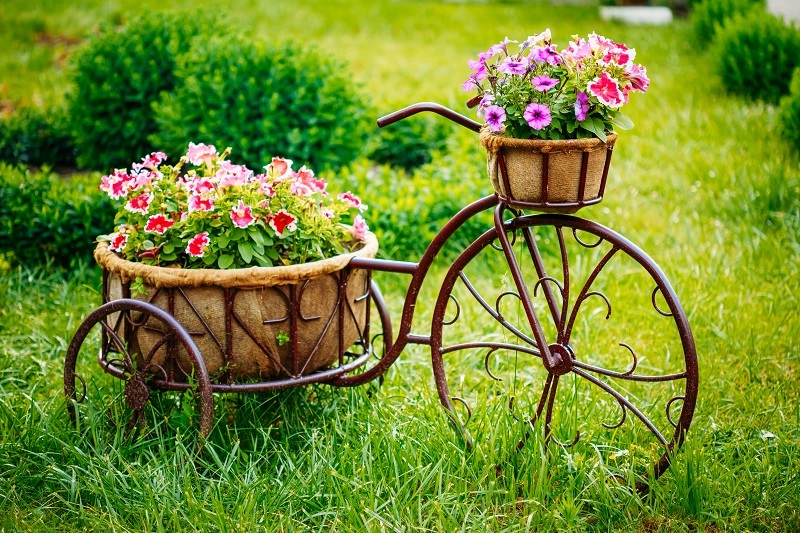You've Been in the Dark About These 8 Sunflower Facts
Posted on 18/08/2025
You've Been in the Dark About These 8 Sunflower Facts
Bright and cheery, sunflowers are more than just a garden favorite. These stunning yellow blooms have captured hearts, inspired artists, and fed populations for centuries. But how much do you really know about them? Dive into these eight fascinating sunflower facts that are sure to brighten your understanding and appreciation for these remarkable plants. It's time to step out from the shadows and discover the dazzling world of sunflowers!
1. Sunflowers Follow the Sun - But Only When They're Young!
One of the most enduring images of sunflowers is their sunny heads turning throughout the day. This amazing phenomenon is known as heliotropism. But did you know that sunflowers only follow the sun when they're in the bud stage? Let's illuminate this myth and uncover the science behind this behavior.
Phototropic Power: How Young Sunflowers Track the Sun
- Young sunflower buds exhibit heliotropism, facing east at sunrise and then slowly turning west as the sun moves across the sky.
- This motion is powered by changes in growth hormones found in the stem, allowing the plant to maximize photosynthesis and energy production.
However, as sunflowers mature and bloom, their stems stiffen, and the flowerheads settle facing east. This clever strategy helps the flowers warm up faster in the morning, attracting more pollinators like bees, who are more active in warmer conditions.

2. Sunflowers Are Not Just One Giant Flower
If you've ever looked closely at a sunflower, you'll notice an intricate pattern of tiny florets in the center. Surprisingly, what we call a "sunflower" is not a single flower but a composite flower made up of hundreds or even thousands of tiny blossoms! This unique arrangement is called an inflorescence.
The Fascinating Structure of the Sunflower Head
- Ray florets: The large, yellow "petals" are actually individual flowers called ray florets. They are sterile and mainly serve to attract pollinators.
- Disc florets: The center of the sunflower consists of many small flowers called disc florets. Each can mature into a seed after pollination.
This complex structure is not just visually stunning but also a marvel of plant evolution--maximizing reproductive success by providing a one-stop buffet for pollinators.
3. Sunflowers Are Rooted in History and Symbolism
The history of sunflowers stretches back over 4,500 years. Originally domesticated by Native Americans, sunflowers played vital roles in food, medicine, and culture long before they adorned European gardens.
Sunflowers in Ancient Civilizations
- Native American tribes used sunflower seeds for cooking oil, bread, and snacks, while the plant's fibers were used for textiles and the stems for building materials.
- Sunflowers featured in ceremonial and spiritual contexts, symbolizing fertility, bounty, and the sun itself.
- When Spanish explorers brought sunflowers to Europe in the 16th century, they quickly became a symbol of adoration and faithfulness, often appearing in artwork and royal gardens.
Today, sunflowers remain globally beloved, frequently representing happiness, hope, and vitality in various cultures and artworks.
4. Sunflowers Are Superfood Powerhouses
If you're enjoying sunflower seeds as a snack, you're not just satisfying your tastebuds--you're also nourishing your body. Sunflower seeds contain a wealth of important nutrients, turning them into a veritable superfood.
What Makes Sunflower Seeds So Nutritious?
- Rich in Vitamin E: Essential for protecting your cells and supporting healthy skin.
- Packed with Protein: Just one ounce contains about 5.5 grams of protein, making them an excellent plant-based option.
- Minerals Galore: Sunflower seeds provide magnesium, selenium, copper, and more.
- Filled with Healthy Fats: High in poly- and monounsaturated fats, they're great for heart health.
Next time you're looking for a nutritious, tasty, and filling snack, remember there's a reason nutritionists rave about sunflower seeds!
5. Sunflowers Can Clean Up Toxic Soils
Sunflowers do more than brighten landscapes--they can actually help save them. These resilient plants are adept at a process called phytoremediation, whereby they draw toxins from the soil through their roots.
Sunflowers as Nature's Cleanup Crew
- Sunflowers have been planted at sites of environmental disasters, including Chernobyl and Fukushima, to help absorb heavy metals such as lead, arsenic, and even radioactive uranium from contaminated soils.
- This ability not only helps reclaim toxic landscapes but also underscores the role of sunflowers in environmental sustainability.
With their striking beauty and environmental utility, sunflowers truly bloom with purpose, making them heroes in both fields and urban settings struggling with pollution.
6. Sunflowers Come in a Rainbow of Colors
While the classic image of a sunflower is a tall stalk with a bright yellow halo, there's a colorful secret the average gardener might not know: sunflowers come in an extraordinary variety of shades, sizes, and forms!
The Many Faces of Sunflowers
- Colors: Sunflower petals can range from creamy white and lemon yellow to deep red, burgundy, orange, and even rich chocolate brown.
- Sizes: Dwarf varieties like 'Little Becka' grow just a foot tall, while giants such as 'Russian Mammoth' can soar over 12 feet high!
- Unusual Forms: Some cultivars, like 'Teddy Bear,' showcase fluffy, double blooms, while others have quirky, ruffled petals.
This diversity makes sunflowers a favorite among gardeners, florists, and photographers alike. No matter your space or style, there's bound to be a sunflower that suits you perfectly!
7. The Mathematics Behind Sunflower Patterns
Long before humans marveled at the beauty of the sunflower head, nature had already perfected a mathematical design to pack the most seeds into the smallest possible space. This pattern is called Fibonacci spirals.
Nature's Mathematical Marvel
- Seed Arrangement: The spirals in a sunflower head typically follow the Fibonacci sequence--each new seed appears at a certain angle (approximately 137.5? from the last).
- This arrangement ensures every seed is optimally spaced, allowing the flower to maximize seed count and distribution.
- It's a living example of the "golden ratio," a mathematical concept observed in art, architecture, and nature's design.
Next time you admire the mesmerizing face of a sunflower, remember you're gazing at a masterpiece of mathematics and biology combined.
8. Sunflowers Hold World Records
Sunflowers don't just stand tall in gardens--they also loom large in the record books. Over the years, gardeners and enthusiasts have competed to see how far this plant can go, both in height and seed production.
World-Breaking Sunflower Achievements
- Tallest Sunflower: The tallest sunflower ever recorded reached a staggering height of 30 feet 1 inch (9.17 meters)! This record was set by Hans-Peter Schiffer in Germany in 2014.
- Most Flower Heads on a Single Plant: A sunflower in Michigan set the record with a whopping 837 blooms on one plant.
- Largest Sunflower Face: The broadest recorded face of a sunflower was over 32 inches (82 cm) in diameter.
These feats show just how extraordinary and variable sunflowers can be. Whether you're interested in breaking gardening records or simply growing a cheerful patch in your backyard, sunflowers never cease to amaze.

Frequently Asked Questions About Sunflowers
Are sunflower seeds healthy?
Absolutely! Sunflower seeds are packed with protein, healthy fats, vitamins, and minerals, making them a nutritious snack for any diet.
Can you eat all types of sunflowers?
While most cultivated sunflowers produce edible seeds, some ornamental varieties are bred primarily for their stunning flowers and may not yield tasty seeds. Always choose seeds labeled "edible" or "for consumption" if you plan to eat them.
Do sunflowers really clean up radioactive waste?
Yes, to an extent! Sunflowers have been used in phytoremediation projects to help remove toxic metals and radioactive elements from contaminated soils, thanks to their unique root absorption abilities.
How can I grow sunflowers in my garden?
- Find a sunny spot with well-draining soil.
- Plant seeds 1-2 inches deep and about 6 inches apart.
- Water regularly and watch for birds, as they love to snack on seeds!
- Support tall varieties with stakes, and enjoy their radiant blooms all summer long.
Conclusion
Sunflowers are far more than meets the eye. These magnificent blooms boast incredible ecological roles, mathematical perfection, deep symbolism, nutritional benefits, and even world records. Whether you grow them for their beauty, their seeds, or their sustainability powers, there's always something new and inspiring to learn about sunflowers.
So the next time you stroll past a sunflower or enjoy a handful of seeds, remember: you're engaging with a plant of astonishing complexity and remarkable history. Step into the sunlight and appreciate the secrets and stories that these golden giants carry. You'll never look at a sunflower the same way again!
Latest Posts
The Definitive Manual for Orchid Lovers
The Artful Expression of Peony Flowers: Color and Symbolism
You've Been in the Dark About These 8 Sunflower Facts





